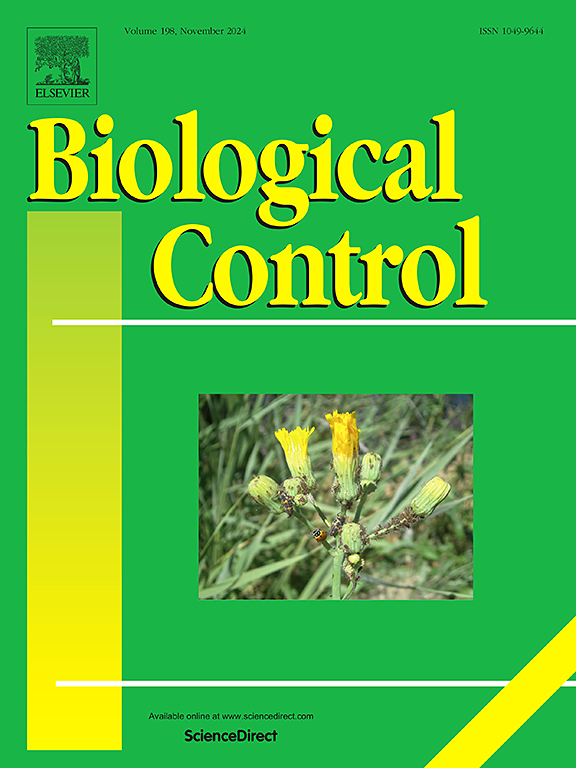One size does not fit all: Classical weed biological control across continents
IF 3.7
2区 农林科学
Q2 BIOTECHNOLOGY & APPLIED MICROBIOLOGY
引用次数: 0
Abstract
Pre-release quarantine testing of weed biological control agents is frequently initiated using simple no-choice tests. However, these fundamental host range tests are conservative and often do not realistically depict how potential biological control agents might interact with surrounding non-target plants in the field. If no-choice tests are the only method employed it can lead to the rejection of sufficiently host-specific agents. Ecological host range studies in areas where the biological control agent is native or already present can test the validity of laboratory findings with the advantage of evaluating long-range host-recognition behaviors of the insect. A weed biological control program targeting Schinus terebinthifolia Raddi (Anacardiaceae) was given permission to release Pseudophilothrips ichini (Hood) (Thysanoptera: Phlaeothripidae) in Florida, USA in 2019. Information from the program in the USA has provided insight for other countries with invasive Brazilian peppertree, such as Australia, which has several native non-target species within the Anacardiaceae family. To evaluate the risk of non-target attack by P. ichini on three Australian native non-target species (Rhus taitensis, Pleiogynium timoriense, and Euroschinus falcatus), we performed a two-phase open-field experiment to simulate the spillover risk of the biological control agent in both the presence and absence of their preferred host, S. terebinthifolia. Also included in the open-field experiment were Schinus molle, a close relative of S. terebinthifolia introduced in the USA and Australia, and the Hawaii native Rhus sandwicensis. The results suggest that P. ichini populations may spill over onto two non-target plants, S. molle and R. taitensis, in the absence of the target weed S. terebinthifolia, and could pose a risk to this native species in Australia. This work highlights the importance of international collaborations on invasive plant biocontrol programs.

求助全文
约1分钟内获得全文
求助全文
来源期刊

Biological Control
生物-昆虫学
CiteScore
7.40
自引率
7.10%
发文量
220
审稿时长
63 days
期刊介绍:
Biological control is an environmentally sound and effective means of reducing or mitigating pests and pest effects through the use of natural enemies. The aim of Biological Control is to promote this science and technology through publication of original research articles and reviews of research and theory. The journal devotes a section to reports on biotechnologies dealing with the elucidation and use of genes or gene products for the enhancement of biological control agents.
The journal encompasses biological control of viral, microbial, nematode, insect, mite, weed, and vertebrate pests in agriculture, aquatic, forest, natural resource, stored product, and urban environments. Biological control of arthropod pests of human and domestic animals is also included. Ecological, molecular, and biotechnological approaches to the understanding of biological control are welcome.
 求助内容:
求助内容: 应助结果提醒方式:
应助结果提醒方式:


